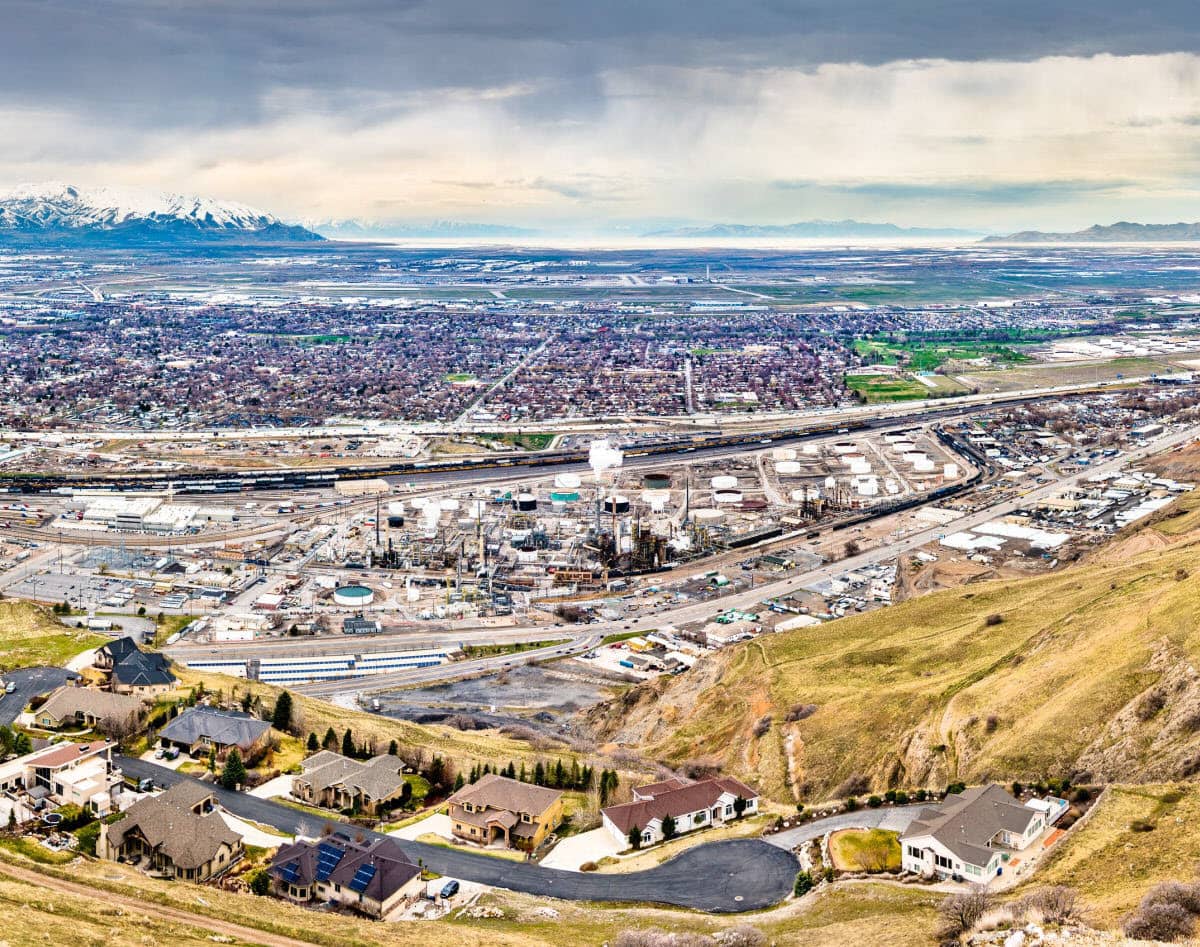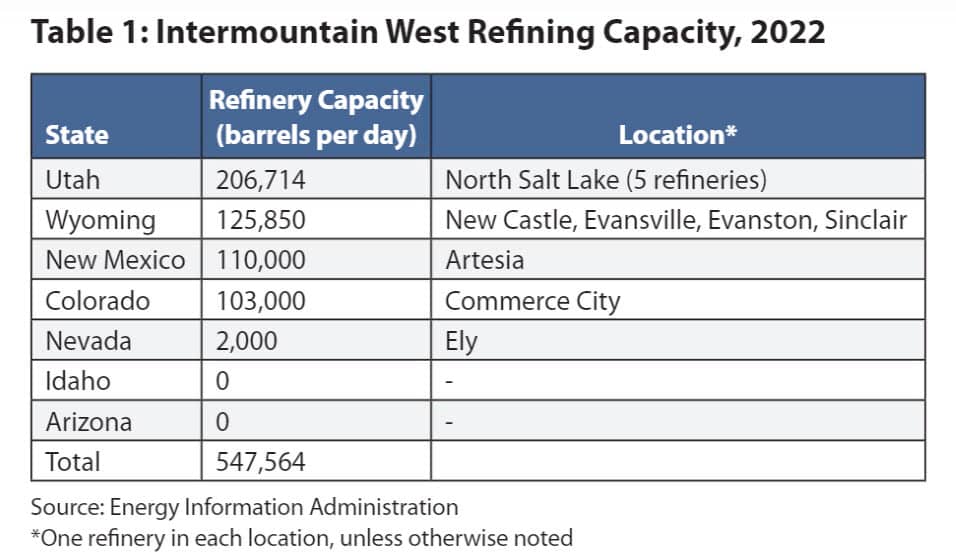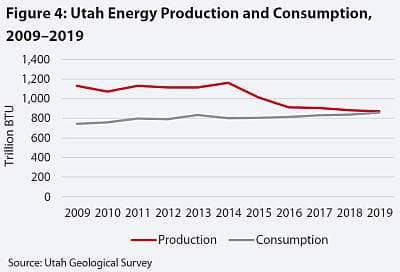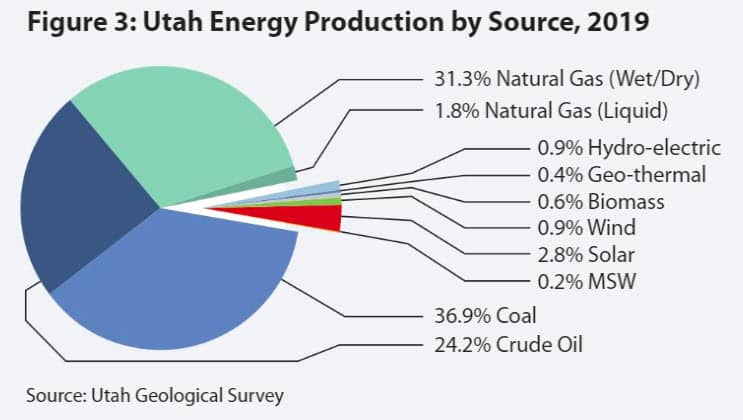


Today the Salt Lake Chamber, with assistance from the Kem C. Gardner Policy Institute and R&R Partners, released a report describing Utah's energy attributes, production make up and future. It envisions an energy future that places Utah at the center of the nation's energy transition by harmonizing and balancing environmental and economic progress to ensure a low-carbon energy future that remains affordable, reliable and sustainable.
 “A strong economy for future generations will require strategic planning for our energy today and the transition of tomorrow,” said Derek Miller, president and CEO, Salt Lake Chamber. “Utah possesses many advantages that will help it lead out, including a diverse energy portfolio, mineral assets, strong business and community leadership, an innovative entrepreneurial ecosystem, and a culture of getting things done. The business community supports an energy future where environmental protection and economic progress work in harmony to ensure a low-carbon future that remains affordable, reliable and sustainable.”
“A strong economy for future generations will require strategic planning for our energy today and the transition of tomorrow,” said Derek Miller, president and CEO, Salt Lake Chamber. “Utah possesses many advantages that will help it lead out, including a diverse energy portfolio, mineral assets, strong business and community leadership, an innovative entrepreneurial ecosystem, and a culture of getting things done. The business community supports an energy future where environmental protection and economic progress work in harmony to ensure a low-carbon future that remains affordable, reliable and sustainable.”
This vision will set Utah apart from other states and one that can act as a model for the nation’s energy transition, in addition to highlighting positive things moving us in the right direction, such as major renewable energy projects and innovation investment.
Key findings include:
 Utah positioned to lead. Utah possesses unique energy advantages that will help the state lead out on environmental, energy, refining capacity, and economic progress. For example, Utah leads its neighbors in refining capacity (Table 1, page 2 of the report).
Utah positioned to lead. Utah possesses unique energy advantages that will help the state lead out on environmental, energy, refining capacity, and economic progress. For example, Utah leads its neighbors in refining capacity (Table 1, page 2 of the report).- Utah’s energy transition must balance affordability, reliability and sustainability. Managing Utah’s growth will require that environmental protection and economic progress work in harmony.
- Incentives Preferred Over Regulations. The business community favors an energy transition that is market-driven and pragmatic, spurred by incentives and not only by government regulation.
“I appreciate the Chamber and the Gardner Policy Institute bringing the voice of business to the climate risk discussion and to what Utah’s energy future should look like,” said Scott Anderson, president and CEO, Zions Bank. “Utahns have recently identified water conservation and air quality as among the most important issues facing our state. Government should not and cannot respond to these issues alone. Businesses must be involved and lead out on these critical issues. As a business person in Utah, I see climate change and the energy transition as an economic opportunity that will benefit our economy, protect our environment and preserve our health. It can be and should be a win-win for everyone. But there is urgency for cooperation among business, government and individual consumers, one that is driven by risk, opportunity and responsibility.”
 Of particular interest will be non-fuel mineral assets because of their importance to energy storage and a world rapidly transitioning to electric vehicles. Six major future energy projects, including nuclear (in Idaho and Wyoming) and hydrogen (in Delta), will benefit the Beehive State over the next two decades, even as three coal-fired power plants close and major refineries produce at capacity.
Of particular interest will be non-fuel mineral assets because of their importance to energy storage and a world rapidly transitioning to electric vehicles. Six major future energy projects, including nuclear (in Idaho and Wyoming) and hydrogen (in Delta), will benefit the Beehive State over the next two decades, even as three coal-fired power plants close and major refineries produce at capacity.
"It is imperative to have the business community engaging in the energy discussion,” said Steven Ridge, Vice President & General Manager - Western Gas Distribution of Dominion Energy. Utahns are fortunate to have leaders in Utah working to progress energy innovation, environmental efforts, and economic development."
 The Business Vision is the outcome of 11 focus groups with college and university students, members of the Utah Legislature, and business representatives from the following sectors: agriculture and food, banking, energy and minerals, health care, hospitality and tourism, real estate and construction, technology, and transportation. The focus group discussions were on how Utah’s transitioning energy industry will affect various Utah business sectors.
The Business Vision is the outcome of 11 focus groups with college and university students, members of the Utah Legislature, and business representatives from the following sectors: agriculture and food, banking, energy and minerals, health care, hospitality and tourism, real estate and construction, technology, and transportation. The focus group discussions were on how Utah’s transitioning energy industry will affect various Utah business sectors.
The report indicates that Utah has been a net energy exporter since 1980. However, the state's energy production has been declining since 2009 with a sharp drop in 2014 (Figure 4, page 4, above). Coal production has declined 37% and natural gas 40% between 2009 and 2019, (the latest data year the report cites). Utah's energy production mix, as shown below (Figure 3, page 4 of the report), shows coal as the leading energy source at almost 37% of the total. The report indicates that 13% of Utah's annual coal production is exported to Asia and 15% goes to neighboring states.
 Natural gas production follows closely at 31.3% and crude oil at 24.2%. To date, renewables and other non-fossil fuel sources combined have made up under 6% of the state's energy production mix, as of 2019. However, that contribution should increase as non-fossil fuel energy sources, including nuclear plants slated to come online in Idaho and Wyoming in 2028 and 2029 could affect Utah's energy mix (Table 2).
Natural gas production follows closely at 31.3% and crude oil at 24.2%. To date, renewables and other non-fossil fuel sources combined have made up under 6% of the state's energy production mix, as of 2019. However, that contribution should increase as non-fossil fuel energy sources, including nuclear plants slated to come online in Idaho and Wyoming in 2028 and 2029 could affect Utah's energy mix (Table 2).
“Utah’s energy future will require a diversified approach to meet our environmental and economic needs,” said Gardner Institute Senior Energy Analyst Thomas Holst. “This report represents a pivotal research step in meeting those needs by bringing together business and community leaders in a way that will propel our state to the forefront of ensuring the U.S. has an affordable and sustainable energy future.”

